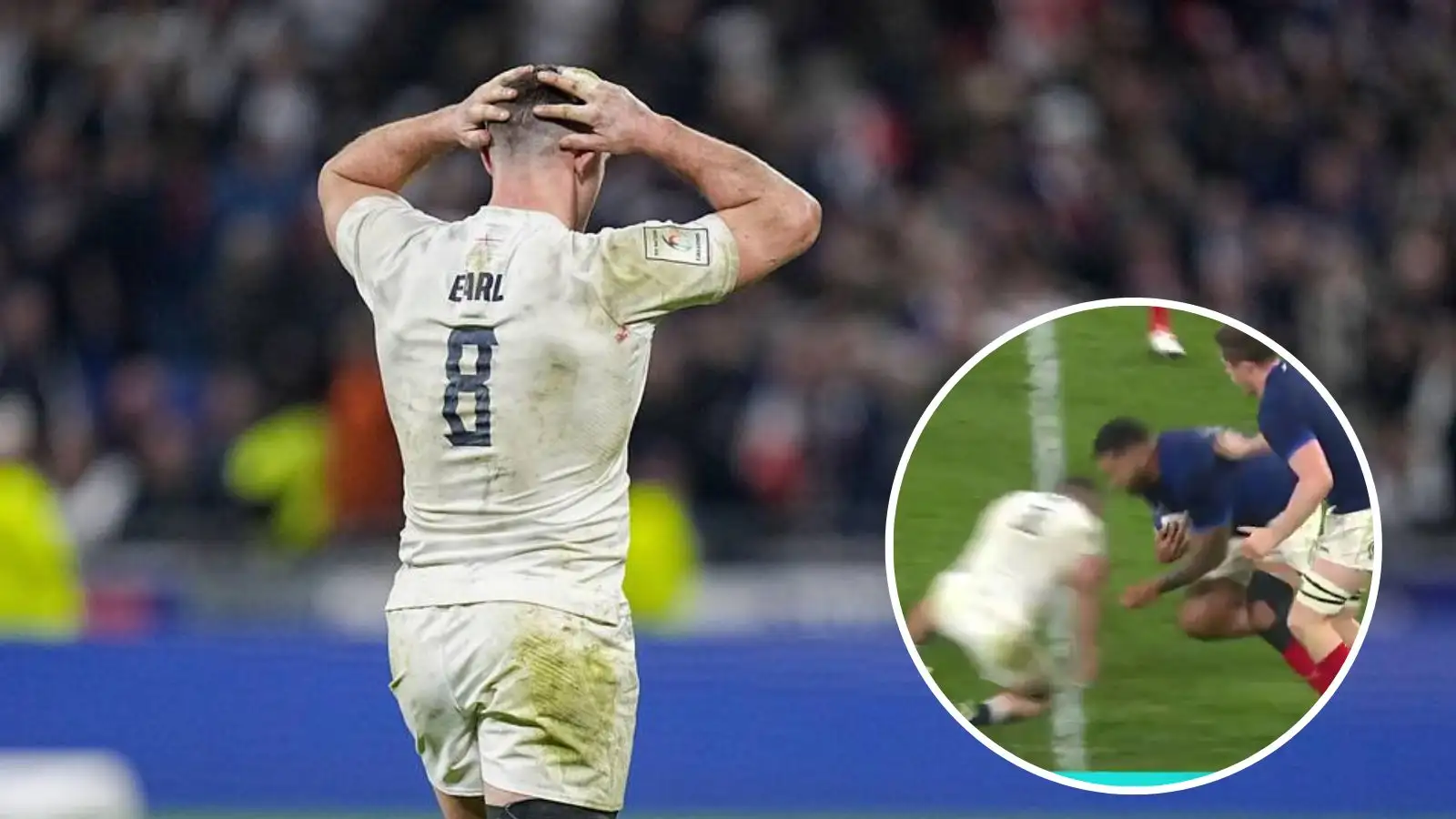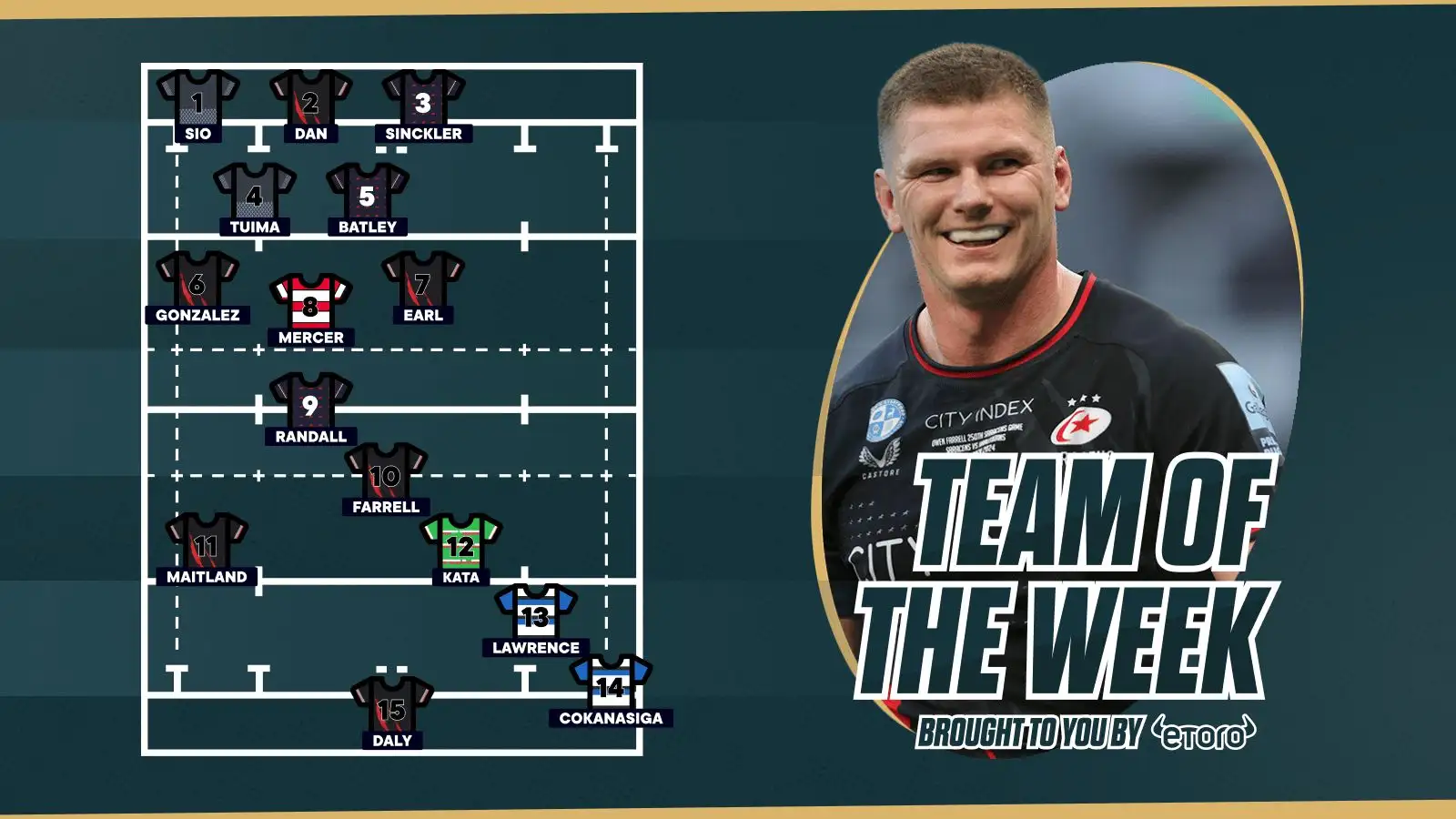Law discussion: Should Ben Earl have been penalised for his final tackle against France?

Did Angus Gardner make the correct the call? We discuss Ben Earl's tackle in the final stages of the Six Nations clash against France.
Following the weekend’s Six Nations action, we dive into our law discussion focusing on Ben Earl’s tackle that cost England in their 33-31 defeat to France.
It’s been well-commented on since the thriller in Lyon that many believe Earl was especially unlucky to be penalised for the last-minute tackle on Romain Taofifenua, leading to the penalty which Thomas Ramos used to break English hearts.
So was referee Angus Gardner correct in his decision to penalise Earl or not? We discuss.
Ben Earl’s tackle on Romain Taofifenua
The highest-profile plaintiff was former England wing Ugo Monye, whose irked reaction on ITV after the game summarised neatly all the debates raging around the incident.
“I’m sorry, Ben Earl offers his arm up – I think we see that type of tackle many a time in the game. He offers his arm! He offers his arm! He offers his arm here; he doesn’t wrap it because he’s got Taofifenua, who’s 23 stone, going through him,” insisted Monye.
So a quick check on the law is worthwhile.
Law 14 – The Tackle, defines the requirements for a legal tackle:
– For a tackle to occur, the ball-carrier is held and brought to ground by one or more opponents.
– Being brought to ground means that the ball-carrier is lying, sitting or has at least one knee on the ground or on another player who is on the ground.
– Being held means that a tackler must continue holding the ball-carrier until the ball-carrier is on the ground.
Are these all fulfilled? Not really. Earl certainly does not hold Taofifenua as the colossal Frenchman crashes onward. But that, in itself, is hardly a capital offence; holding a tackled player to the ground is almost impossible every time – tap tackles would be illegal for openers! Officials do, however, have to look at technique; whether an attempt to wrap was made.
Four stars shortlisted for Six Nations Player of the Championship after ‘fan vote’
Some disagreement among our panelists 👀
Was the final penalty against Ben Earl harsh?#GuinnessSixNations | #FRAvENG pic.twitter.com/3AH4rmO8Y7
— ITV Rugby (@ITVRugby) March 16, 2024
Earl’s technique is really poor, most likely because he is absolutely stuffed; he put in a tremendous shift as he always does.
Taofifenua is, from the moment he catches the ball, running nowhere else but at Earl’s outside shoulder, partly because he’s 23 stone and unlikely to be able to step off a dime, but also because Earl gets himself into a very unorthodox side-on position despite there being minimal deception in Taofifenua’s running line. Earl shows him which side to go for and has an absolutely stock-standard tackle to make here.
His arm is out from his body slightly, and he’s not moving forward, so he’s not shoulder-charging as such, but the position he is in is certainly not offering an arm. Offering an arm would be to open it up flat, ready to wrap it around the body of the onrushing player, as well as to turn to meet the player chest-on.
But as you can see from the still below, milliseconds before the point of contact, his arm is pointing straight at the floor, parallel to Taofifenua’s leg, while his chest is facing towards the touchline. He’s no chance of wrapping here unless he changes his shape extremely fast.

England back-rower Ben Earl’s tackle on Romain Taofifenua during France v England – Six Nations. (via ITV Rugby)
He also has his knee on the ground already, which technically is illegal as well as you are not allowed to tackle a player while on the ground, according to law 13.3.c, which states that “A player on the ground in the field of play, without the ball, is out of the game and must… not tackle or attempt to tackle an opponent. But this technicality is not what the penalty is for; the call is clear (and also, we think, comes from the TMO initially) “No-arms tackle”.
Conclusion
His arm does not move. It may be ‘offered’, in the sense that it is not held against his body as though to shoulder-bump, but in no universe is his arm ever in a position to wrap. Instead he uses his shoulder to make the contact just above the knees to trip Taofifenua off his feet. The contact itself is not with the wrong part of the shoulder particularly, but still, there is no semblance of a wrap.
So, referee Angus Gardner was absolutely within his rights to penalise.
However, the argument that many tackles like this go unpunished is solid to an extent. It happens most often within the ten metres before the goal-line, as it is a tackle technique which makes it almost impossible to continue the contact momentum with a leg drive. Certainly, some of these should be penalised more often than they are. Many tackles at pick-and-go movements are of a similar kind as well, but generally, because the ball carrier is extremely low as well, and the tackle is from necessity.
In this case, however, the tackle technique was unnecessarily poor, and a penalty was the correct decision in law.
READ MORE: World Rugby reveal plans to depower scrums and close ‘Dupont Law’ loophole



